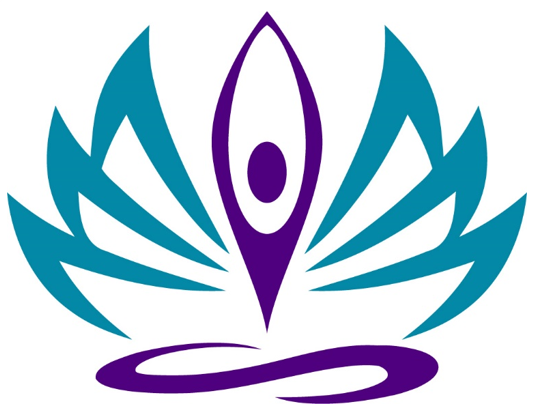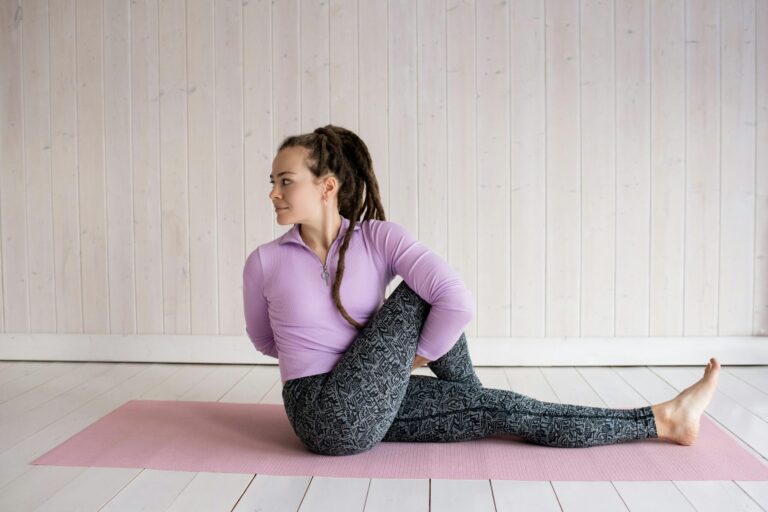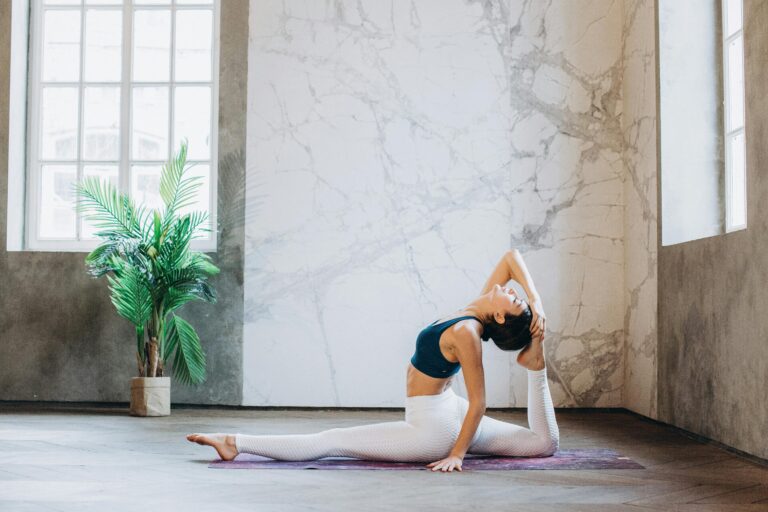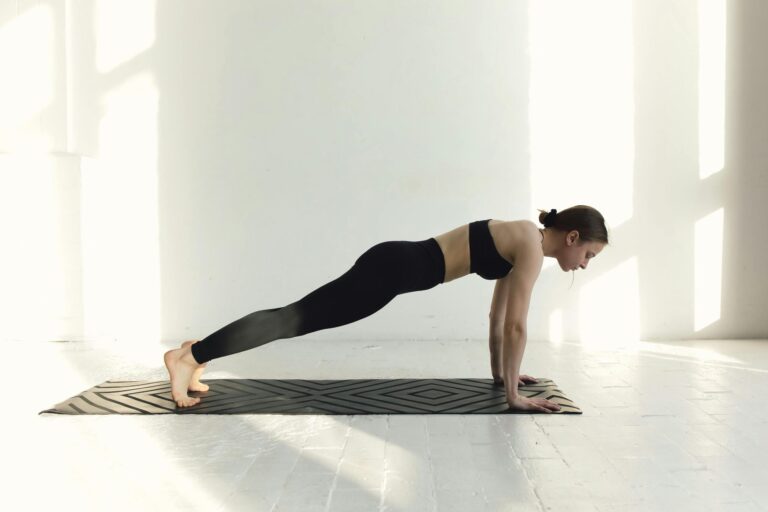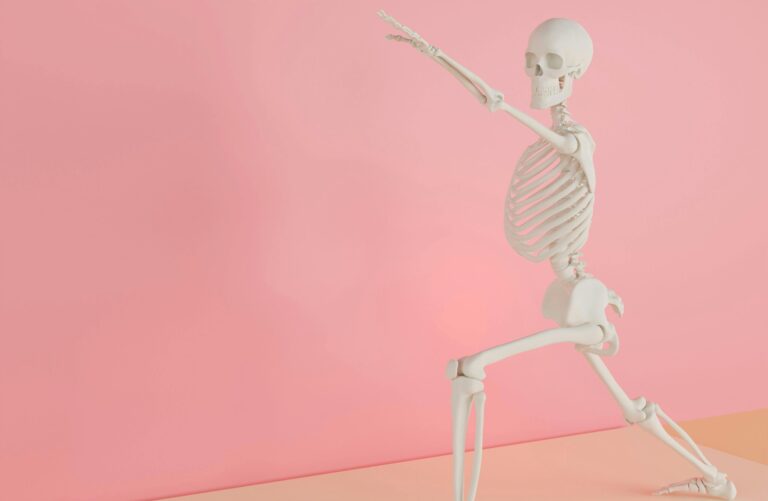Chest opening in yoga: the connection between mobility and breathing
Do you often feel tense after a long day at your desk? Do your shoulders pull forward and do you feel like your chest is slumped? Then you're not alone! Many people suffer from a forward leaning posture, which can lead to tension, restricted breathing and even back pain. The good news: with targeted yoga exercises, you can open up your chest area, improve your posture and enjoy deeper, freer breaths.
Why an open breast is so important
Our modern lifestyle often means that we spend hours sitting, working at a screen or looking at a smartphone. This often results in a rounded upper back (kyphosis), a head that falls forward and slumped shoulders. This not only affects our muscles, but also our breathing and energy levels.
A tight chest area can lead to:
- The intercostal muscles are shortened and the breathing capacity is restricted.
- The thoracic spine becomes rigidly curved, which reduces mobility.
- The shoulders and neck are under constant tension, which promotes headaches and tension.
By consciously opening the chest in yoga, we can counteract these patterns and support an upright, energetic posture.
The biomechanical significance of an open chest
The chest area is closely connected to the spine and the diaphragm. A restricted rib cage usually leads to insufficiently deep breathing and, as a result, increasingly restricted mobility of the ribs and pelvis. Why is this the case?
During an optimal inhalation, your ribs should expand mainly to the side, but also to the front and back, while the diaphragm and pelvic floor gently lower downwards. You should feel a noticeable widening of the pelvis and abdomen. As you exhale, these areas - pelvis, abdomen and chest - gently contract again and both the diaphragm and the pelvic floor return to their original position.
If the mobility of the ribcage is restricted, this disrupts this natural process and leads to shallow, inadequate breathing. This puts the body in a vicious circle: restricted breathing reduces the movement of the ribs with every breath, which means that the natural mobility training of the upper body, which is ensured by healthy breathing, can no longer take place properly. As a result, the mobility of the ribcage remains the same at best - but usually continues to decrease.
Through targeted yoga exercises we can:
- Mobilize and straighten the thoracic spine.
- Stretch and activate the front body chain.
- Expand your breathing capacity and enable deeper, fuller breaths.
The best yoga exercises for an open chest
I have recorded a 20-minute video for you with yoga and biomechanical exercises to gently open up your chest area:
If you don't feel like or don't have time for a whole video, you can use these targeted exercises to give your upper body more width and release tension:
1st chest opening with the yoga strap
This exercise is perfect for bringing movement into the shoulders and expanding the chest.
- Stand upright with your feet hip-width apart.
- Grip your yoga strap wide (approx. 1 arm length).
- Keep your arms stretched and the yoga strap taut.
- Bring your arms up over your head.
- Then bring your outstretched arms down behind you until you reach your buttocks. Keep a slight tension in your lower abdomen to avoid falling into a hollow back.
- Then bring your outstretched arms back to the front all the way up.
- Adjust the length of your yoga strap if necessary: if the exercise was very easy for you, reduce the length of the strap, if the exercise was very difficult or not feasible for you, grip a little wider.
- Repeat this exercise 5-10 times.


2nd breast opening for in-between
This exercise is ideal for incorporating into your everyday life. You can do it sitting, kneeling or standing.
- Kneel on the mat with your shins resting on the mat and sit back with your buttocks resting on the soles of your feet.
- Clasp your hands behind your back
- Roll your shoulders backwards.
- Bring your elbows close together and then straighten your arms.
- Actively roll your shoulders back and pull your hands diagonally back and down.
- Tilt your head back as far as is comfortable for you.
- Hold the position for 5 deep breaths.
- Then release your hands and shake out your arms.
- Then fold your hands the other way and do the exercise again.

3. warrior 1 with chest opening
This variation of Warrior 1 (Virabhadrasana I) combines stability with a gentle chest stretch.
- Place one leg forward in a deep lunge position, the back leg is stretched and the heel is raised.
- Bring your arms into a cactus position: your arms are at 90° to your upper body and you have a 90° angle in your elbows
- Lift your sternum upwards and come into a slight backbend. Breathe deeply into your chest.
- Hold the position for 5 breaths, then switch sides of the legs.

Conclusion: More width and freedom through chest opening
Consciously opening your chest through yoga can have profoundly positive effects on your posture, breathing and general wellbeing. An upright posture not only radiates self-confidence, but also helps to reduce tension and breathe more deeply. By regularly incorporating chest opening yoga exercises into your practice, you can improve your posture in the long term, especially by improving your breathing, and cultivate a sense of lightness and openness.
Treat yourself to these moments of space and freedom on your yoga mat - your body and mind will thank you for it!
